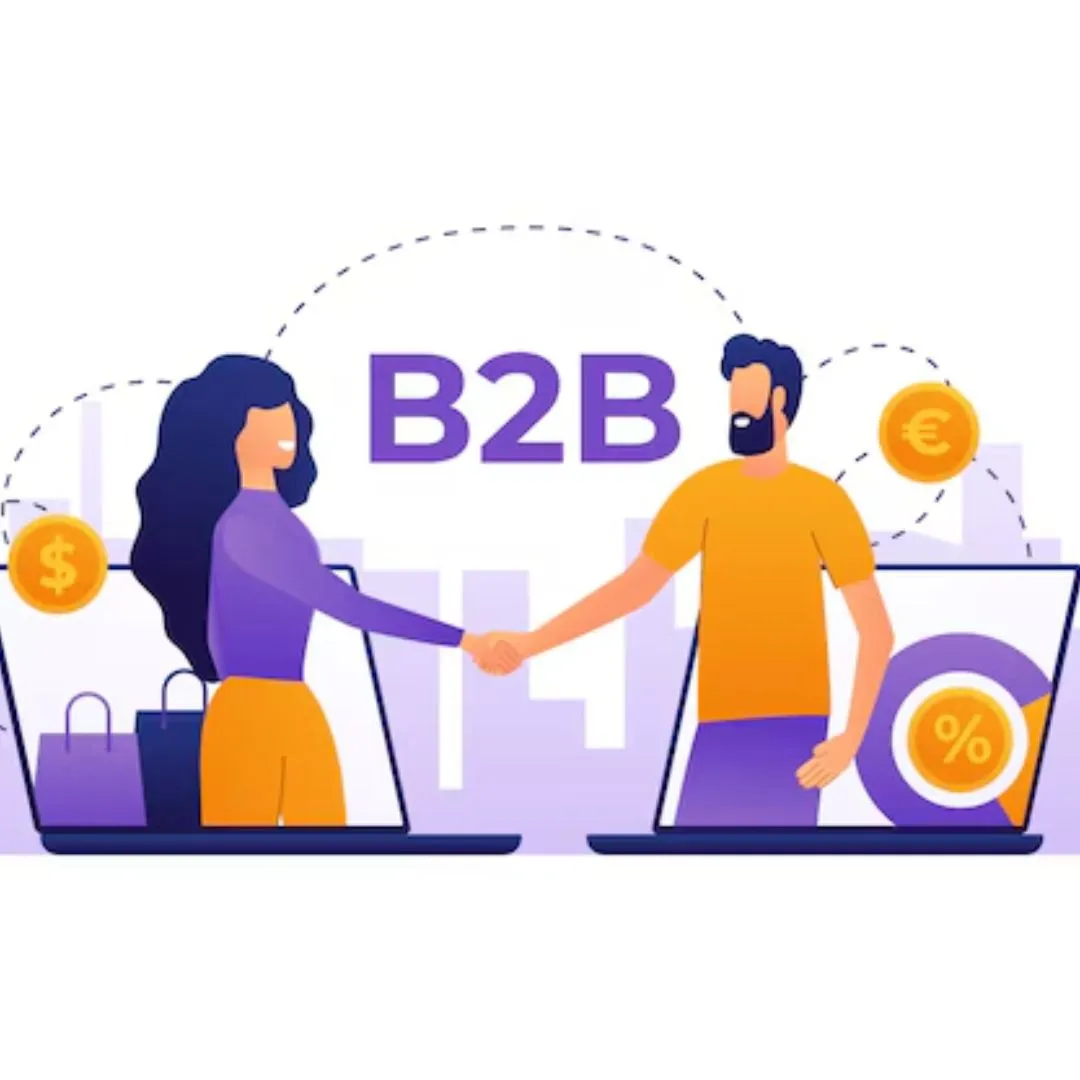Discover the best practices for B2B lead generation to attract, nurture, and convert high-quality leads. Learn proven strategies to grow your business.
Best Practices for B2B Lead Generation
Generating B2B leads is essential for driving business growth. Without a consistent stream of qualified leads, companies struggle to build relationships, increase sales, and stay competitive. However, generating B2B leads isn’t just about collecting contact information ; it’s about identifying and nurturing the right prospects who are genuinely interested in your products or services.
In this guide, we’ll explore the best practices for B2B lead generation, covering everything from inbound and outbound marketing strategies to automation and analytics. Whether you’re a startup or an established enterprise, these proven techniques will help you attract, engage, and convert more leads into paying customers.
Best Practices for B2B Lead Generation
Understanding B2B Lead Generation
What is B2B Lead Generation?
B2B lead generation is the process of identifying potential business clients and nurturing them through the sales funnel. Unlike B2C marketing, which targets individual consumers, B2B marketing focuses on businesses, organizations, and decision-makers.
Why is B2B Lead Generation Important?
- Sustains business growth by continuously feeding the sales pipeline
- Improves conversion rates by targeting high-intent prospects
- Increases revenue by nurturing relationships and closing more deals
- Enhances brand authority in the industry
Best Practices for B2B Lead Generation
1. Identify Your Ideal Customer Profile (ICP) and Target Buyer Persona
Before launching any lead generation campaign, you must understand who your ideal customers are.
- ICP (Ideal Customer Profile): Defines the type of company that would benefit the most from your offerings. It includes industry, company size, revenue, location, and pain points.
- Buyer Persona: Represents the decision-makers within the company, including their job roles, challenges, goals, and buying behavior.
2. Optimize Your Website for Lead Capture
Your website is your digital storefront. It should be designed to attract, engage, and convert visitors into leads.
- Use Clear CTAs (Call-to-Actions): Add compelling CTAs like “Download Our eBook” or “Get a Free Consultation.”
- Create Landing Pages: Dedicated landing pages with lead capture forms convert better than generic pages.
- Implement Live Chat & Chatbots: AI-powered chatbots can engage visitors and collect lead information in real time.
- Improve Website Speed & Mobile Friendliness: A slow or non-responsive site drives potential leads away.
Best Practices for B2B Lead Generation
3. Leverage Content Marketing to Attract Leads
High-quality content positions your brand as an authority and attracts decision-makers looking for solutions.
- Blogging: Write in-depth, SEO-optimized blogs on industry trends, solutions, and best practices.
- Ebooks & Whitepapers: Offer valuable resources in exchange for contact details.
- Case Studies & Testimonials: Showcase how your product/service has helped other businesses.
- Webinars & Virtual Events: Live discussions with industry experts attract highly engaged leads.
4. Implement SEO Strategies for Organic Lead Generation
SEO (Search Engine Optimization) is essential for driving organic traffic and generating leads.
- Keyword Research: Identify and use relevant keywords your target audience is searching for.
- On-Page SEO: Optimize title tags, meta descriptions, headers, and URLs.
- Technical SEO: Improve site speed, mobile-friendliness, and security (SSL).
- Backlink Building: Earn high-quality backlinks from industry websites to increase domain authority.
5. Utilize Social Media for B2B Lead Generation
Social media isn’t just for B2C—it’s a goldmine for B2B leads when used strategically.
- LinkedIn: Post thought-leadership content, engage in groups, and use LinkedIn Sales Navigator.
- Twitter/X: Share industry news and participate in relevant conversations.
- Facebook & Instagram: Use retargeting ads to re-engage website visitors.
- YouTube & TikTok: Create video content explaining your products and industry trends.
Best Practices for B2B Lead Generation
6. Invest in Email Marketing Campaigns
Email marketing is one of the most effective B2B lead generation channels.
- Segment Your Email List: Group leads based on industry, behavior, or engagement level.
- Personalize Emails: Use the recipient’s name and tailor content based on their interests.
- Automate Follow-Ups: Set up automated email sequences to nurture leads over time.
- A/B Test Subject Lines & CTAs: Test different versions to optimize open and conversion rates.
7. Run Paid Advertising (PPC & Social Media Ads)
Paid ads help you reach targeted audiences faster than organic methods.
- Google Ads: Target high-intent search queries related to your services.
- LinkedIn Ads: Promote lead magnets like whitepapers or case studies to professionals.
- Retargeting Ads: Re-engage visitors who left your website without converting.
8. Use Lead Magnets to Capture More Leads
Offer something valuable in exchange for a prospect’s contact information.
- Free Tools & Templates: Provide industry-specific calculators, checklists, or templates.
- Exclusive Reports & Industry Insights: Share data-driven research reports.
- Discounts & Free Trials: Encourage potential clients to try your service.
Best Practices for B2B Lead Generation
9. Nurture Leads with Marketing Automation
Lead nurturing is critical for converting cold leads into customers.
- Drip Email Campaigns: Send a series of automated emails that educate and engage leads.
- Lead Scoring: Assign scores to leads based on their interaction with your brand.
- CRM Integration: Use Customer Relationship Management (CRM) tools like HubSpot, Salesforce, or Zoho to track and manage leads.
Best Practices for B2B Lead Generation
10. Leverage Referral & Partner Programs
Your existing clients and business partners can be powerful sources of high-quality leads.
- Client Referral Programs: Offer incentives for customers who refer new leads.
- Form Strategic Alliances: Partner with related businesses to exchange leads.
Best Practices for B2B Lead Generation
Measuring & Optimizing B2B Lead Generation Efforts
Key Metrics to Track
To improve your lead generation efforts, track and analyze performance using these key metrics:
- Lead Conversion Rate: Percentage of visitors who turn into leads.
- Cost Per Lead (CPL): Amount spent to acquire a new lead.
- Lead-to-Customer Conversion Rate: The percentage of leads that become paying customers.
- Engagement Rate: Interaction levels on email, social media, and content.
- ROI of Lead Generation Campaigns: Measure the revenue generated versus the cost spent.
Best Practices for B2B Lead Generation
Tools for Tracking and Optimization
- Google Analytics: Track website traffic and lead sources.
- CRM Software: HubSpot, Salesforce, Zhou CRM for lead management.
- Email Marketing Platforms: Mailchimp, ACTIVE Campaign, or Convert Kit.
- Heatmaps & Session Recordings: Use tools like Hot jar to analyze visitor behavior.
Best Practices for B2B Lead Generation
Frequently Asked Questions
How much time is required to achieve results from B2B lead generation?
B2B lead generation is a long-term strategy. It can take weeks or months to build a steady stream of high-quality leads, depending on the approach used.
Which B2B lead generation channels yield the best results?
SEO, content marketing, LinkedIn, email campaigns, and PPC advertising are among the most effective channels for B2B lead generation.
How can I generate high-quality B2B leads without spending on ads?
Focus on organic strategies like SEO, content marketing, networking, and social selling on LinkedIn.
Is cold calling still effective for B2B lead generation?
Cold calling can still work if done correctly, but warm outreach through email and LinkedIn is often more effective in today’s digital landscape.
How can I improve lead nurturing efforts?
Use email automation, personalized content, and CRM tools to nurture leads through the sales funnel.
What role does AI play in B2B lead generation?
AI-powered chatbots, predictive analytics, and automated lead scoring help streamline lead generation and improve targeting.
Best Practices for B2B Lead Generation
Conclusion
B2B lead generation requires a strategic approach combining inbound and outbound tactics. By defining your ideal customer, optimizing your digital presence, leveraging content marketing, and using automation tools, you can generate high-quality leads that drive business growth.
By continuously measuring and refining your lead generation strategies, you can maximize efficiency, lower costs, and improve conversion rates. Implement these best practices today and watch your B2B lead generation efforts thrive!







